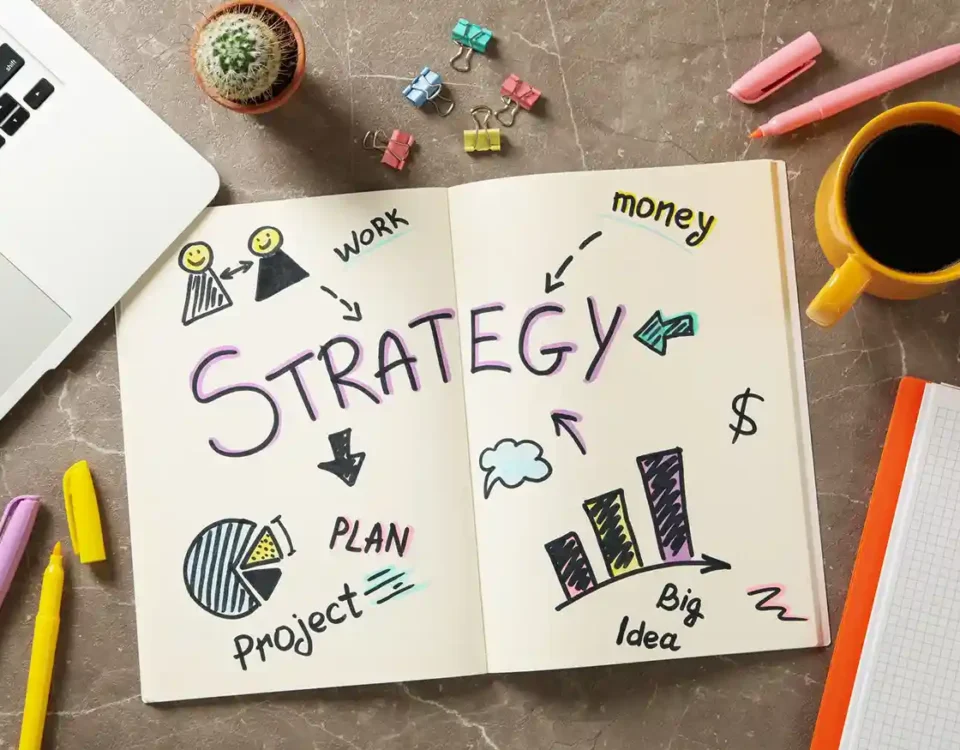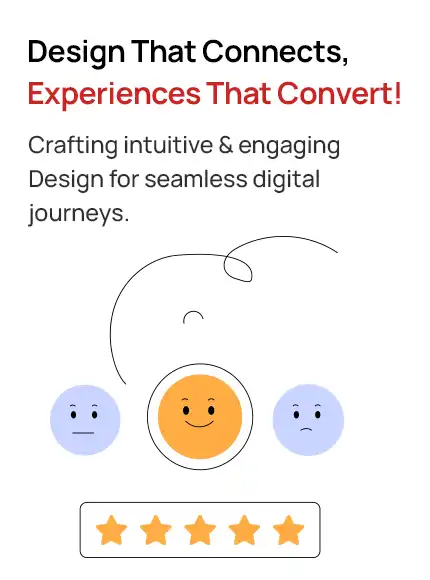
The Role of a Fintech Branding Agency in Building Trust and Growth
July 5, 2025
The Ultimate Guide to Website Design for Manufacturing Companies
July 9, 2025
The Role of a Fintech Branding Agency in Building Trust and Growth
July 5, 2025
The Ultimate Guide to Website Design for Manufacturing Companies
July 9, 2025What Is Visual Identity And Branding In Design
July 07, 2025
- 18 min to Read
Introduction
Did you know it takes just 0.05 seconds for someone to judge your website?
That’s all the time it takes for a visitor to form a first impression—not just about how your site looks, but how your entire brand feels. In those milliseconds, they’re already deciding if you’re credible, relevant, and worth their time.
That’s because in today’s fast-moving, hyperconnected world, people aren’t just buying what you sell—they’re buying into what you stand for.
Your tone of voice, the colors you use, the way your content flows, even how your buttons look—these things speak volumes before a single word is read. Your brand is the full experience someone has when they come across your business. It’s what they see, feel, trust, and remember.
And yet, this is where many businesses miss the mark.
They treat brand identity and brand visual identity like they’re the same thing—when in reality, they’re two very different pieces of the puzzle. Yes, they work hand-in-hand. But mixing them up can lead to a brand that looks polished on the outside, yet lacks clarity and consistency underneath.
If you want to build a brand that doesn’t just look good but truly connects, understanding the difference between these two is key.
Let’s break it all down—what brand identity really means, how visual identity supports it, and why getting both right can set your brand apart in all the right ways.
What is Brand Identity, Really?
Most people assume brand identity is simply how your brand appears—but it actually runs much deeper. Brand identity is the collection of all the core elements that shape how your brand is perceived. It's the soul of your brand—the personality, tone, values, beliefs, and mission that drive your communication and decisions.
Think of it like this:
- If your brand were a person, brand identity would be their personality, voice, beliefs, and values.
- It includes how you speak to your customers, what your brand believes in, what it promises, and how consistently it delivers on that promise.
Your brand identity shows up in:
- Your tone of voice (formal, casual, witty, empathetic?)
- Messaging and brand story
- The customer experience you offer
- Core values and company culture
- The emotional response your audience has when they interact with your brand
It’s intangible, but incredibly powerful.
A well-developed brand identity ensures that whether a customer sees an email from you, visits your store, or interacts with your product—they’re having a consistent, recognizable experience.
Defining Brand Visual Identity
If brand identity is the soul, brand visual identity is the face. It’s the visual part of your brand that people notice first.
Visual identity includes all the design elements used to express your brand visually, such as:
- Logo and icon system
- Color palette
- Typography and font systems
- Graphic styles and patterns
- Photography direction
- Website and digital layout styles
- Packaging design
These visual components are used across platforms—website, social media, advertising, physical products—to create instant brand recognition.
But—and this is important—your visual identity is not your brand. It’s a part of it. A stunning logo or trendy color palette means nothing if it doesn’t align with the actual personality and values of the brand.
Why Businesses Confuse the Two
Many early-stage businesses or startups make the mistake of thinking they’ve "branded" their company once they have a logo and a few social media templates.
But here’s the problem: If your visual identity doesn’t reflect your core brand identity, it creates disconnection and confusion.
Let’s say you run a wellness brand focused on calm, clarity, and mindfulness. But your colors are loud and neon, and your tone of voice is fast-paced and edgy. That contradiction will confuse your audience—and potentially repel the very customers you want to attract.
That's why brand identity should always come before visual identity. You define who you are first. Then, you design how that looks.
The Role of Strategy in Building Identity
You can’t guess your way into a powerful brand. That’s where brand identity development services becomes a critical phase.
This process involves:
- Deep market and audience research
- Competitive analysis
- Brand positioning
- Defining your mission, vision, and values
- Developing brand voice and messaging frameworks
- Translating all of that into a consistent customer experience
Once your brand strategy is clear, you can design visuals that match it.
When both are in sync, your brand starts to feel trustworthy, recognizable, and emotionally resonant—no matter where your audience encounters it.
How Visual Identity Supports Emotional Recognition
People understand images much faster than words. So, when someone sees your brand’s colors, typography, or logo, their brain instantly begins to associate those visuals with an emotion or experience.
That’s the power of a strong visual identity. It makes your brand:
- Recognizable within seconds
- Memorable in crowded spaces
- Consistent across digital and print
- Easier to build emotional connections with
But again—these benefits only work when the visuals align with the brand’s tone and personality.
If your brand is bold and energetic, your visual language should reflect that with vibrant colors, strong typography, and dynamic layouts. If your brand is sophisticated and minimalist, then clean lines, neutral tones, and refined fonts will work better.
Visuals are just tools—they’re only effective when used with intention.
Brand Identity in Action: Real-Life Examples
Let’s explore how some well-known brands handle their identity and visual identity:
Apple:
- Brand Identity: Simplicity, innovation, premium quality, user-first.
- Visual Identity: Clean design, monochrome color palette, minimalistic product shots, sleek typefaces.
Every element of their branding aligns—from their website interface to their product packaging and even their retail experience. It feels like Apple before you even read the words.
Patagonia:
- Brand Identity: Environmental activism, outdoor passion, ethical manufacturing.
- Visual Identity: Earth tones, rugged typography, nature-focused imagery.
Their visuals support their commitment to the planet and adventure. That’s why their customers feel aligned not just with the clothes—but the cause.
The takeaway? Strong brands build from the inside out.
Signs Your Brand Needs Identity Work
You might already have a logo and a website, but if you're noticing the following, it's time to revisit your identity:
- Your visuals look good but don't feel aligned with what you stand for
- Different platforms have different voices or aesthetics
- Customers seem unclear on what your brand does or believes in
- You struggle to create consistent marketing material
- Competitors are easier to recognize than you
In these cases, investing in strategy and alignment can breathe life back into your brand.
How to Bring Both Identities Together
A successful brand aligns both its internal and external expressions—what it stands for, and how it shows up visually.
Here’s a quick roadmap:
1. Start with Strategy: Before choosing fonts and colors, clarify your mission, values, target audience, and unique positioning.
2. Develop a Messaging Guide:Define how your brand speaks—tone, vocabulary, personality traits.
3. Design Visual Elements: Create a logo, select brand colors, build typography hierarchies, and determine image styles based on your strategic identity.
4. Create a Brand Style Guide: Document all visual and verbal standards to ensure consistency across every platform.
5. Audit Regularly: Brands evolve. Check every 6–12 months to see if your identity and visuals still reflect your goals and audience.
When both layers work in harmony, your brand becomes more than a business. It becomes an experience people trust, remember, and come back to.Conclusion: The Upclues Perspective
In a saturated market, visual appeal alone isn’t enough. A beautiful design without purpose is just decoration. For your brand to truly stand out and scale, you need an identity built from values, guided by strategy, and reflected in every visual detail.
That’s where professional brand development services make all the difference. At Upclues, we don’t just design logos—we help businesses craft brand stories that resonate, visuals that connect, and identities that grow with you.
Because branding isn’t just what people see—it’s what they believe. And when both your brand identity and brand visual identity align, that belief becomes loyalty.





